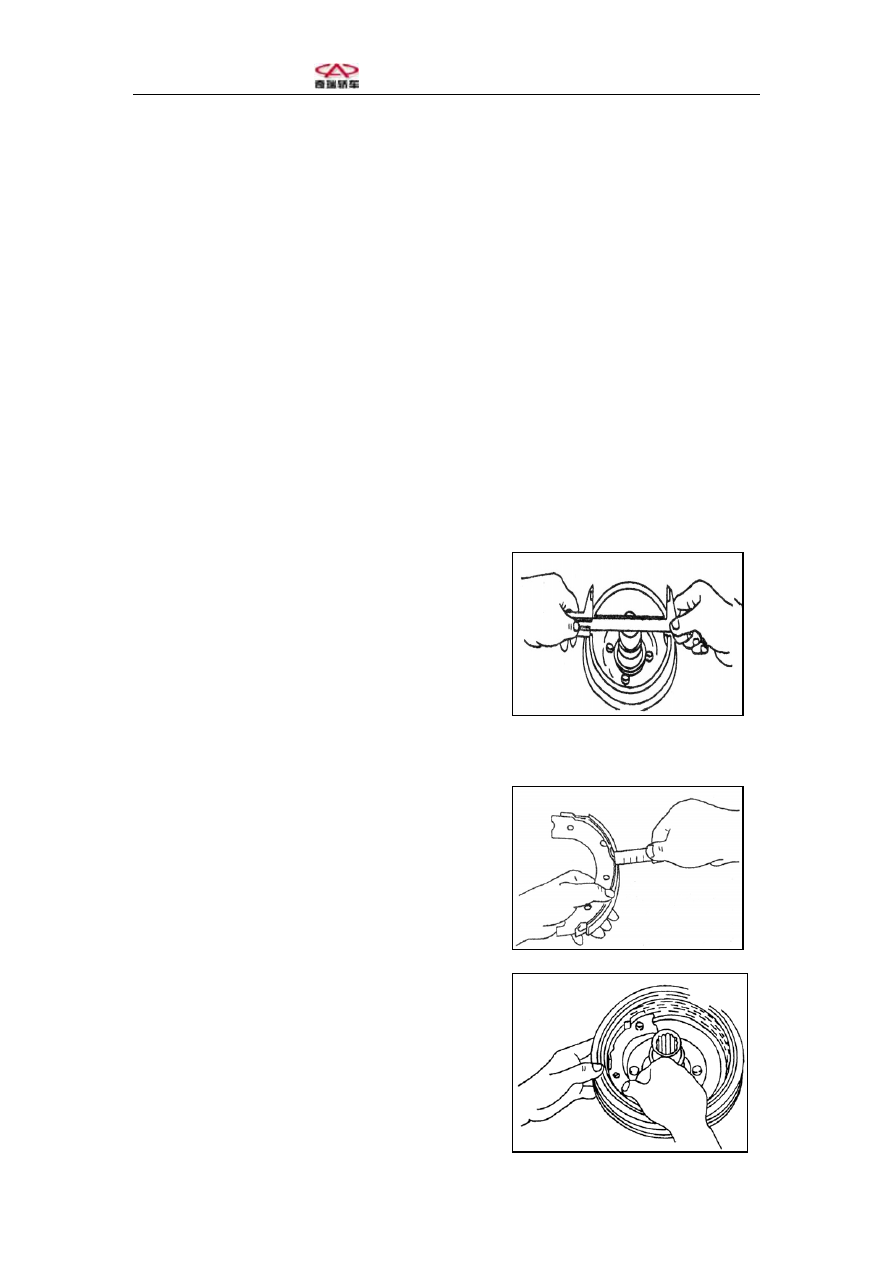Chery A15. Manual - part 213

(3). Fix parking brake dragline on parking brake arm drag, and assemble brake shoe
onto brake cylinder wheel.
(4). Fix lower retracing spring, and regulate wedge spring and retracing spring.
(5). Assemble brake drum and rear wheel hub bearing.
(6) Fully operate brake pedal for several times to set brake shoes in normal working
position
(II). Replacing Brake Strip
Check brake strip for oil stains, and sand with a piece of sandcloth if any. In case
brake strip is worn to the limit, it shall be replaced together with brake shoes.
Note: When replacing brake strip, new brake strip of the same quality made by
the same manufacturer shall be used.
(III). Checking Rear Drum Brake
(1). Measure brake drum inner diameter as shown
in the figure.
Standard inner diameter: 200mm
Service limit: 201mm
In case scratches or slots occur on brake drum inner
diameter after use, reprocess it on a lathe.
Note: Do not exceed service limit when reprocessing with a lathe.
(2). Measure brake strip thickness as shown in
the figure.
Note: Service limit: 2mm
(3). Check the contact between brake strip and
brake drum as shown in the figure.